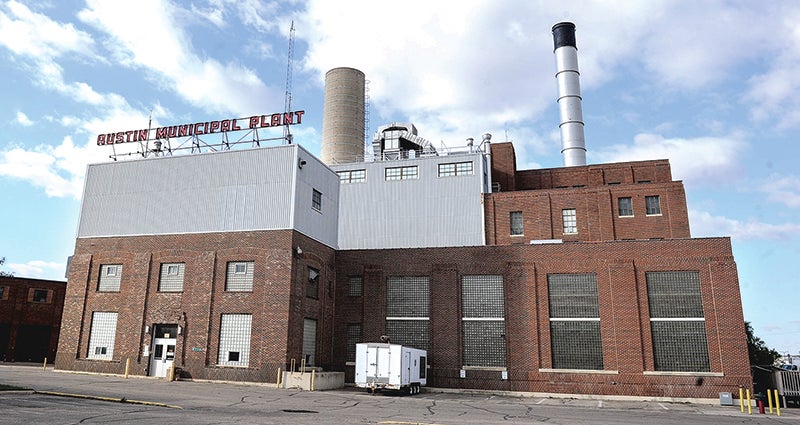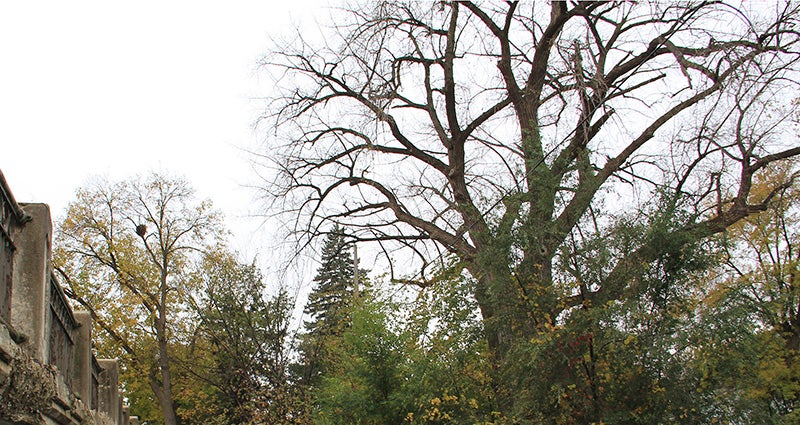Utilities board to vote on $15 to $20M building at Tuesday meeting
Published 4:45 am Monday, March 17, 2014

A boom truck sits in one of the Austin Utilities garages. Garage space has become a premium for Utilities as the space they have to use proves to be a tight fit for the bigger trucks.
Eric Johnson/
photodesk@
austindailyherald.com
Space is so tight at the Austin Utilities downtown facility that workers installed bumpers to prevent damage. Before, workers had difficulty fitting their trucks and loaders inside the downtown building without accidentally smashing windows at the top of the bay.
The bumpers keep the windows safe, but the trucks still have a difficult time fitting — in one area, workers shaved down the floor to make room for vehicles.

Todd Jorgenson, with Austin Utilities, shows parts of a garage where some of the bays closest to him have been revamped to house the bigger boom trucks for repairs.Eric Johnson/photodesk@austindailyherald.com
Storage is part of the reason why Austin Utilities is seeking a new, $15 to $20 million central administrative facility. The Austin Utilities Board is set to decide Tuesday whether the company can proceed on the project.
Utilities: New building would require rates hike
From Page 1A
The board will vote at 4 p.m. Tuesday inside the utilities boardroom whether to hire an architect to design a central administration facility.
Utilities officials would likely need to raise utility rates to help offset project costs. Officials estimate the average residential utility bill would rise by $5 to $6 per month, while a small- to medium-sized business bill would increase an average of $44 to $70 per month and a large business utility bill would increase an average $66 to $142 per month. The company will also look at federal and private grants to offset construction costs, according to Austin Utilities General Manager Mark Nibaur.
The board directors said at the last meeting in February they’re for the most part convinced to go ahead with the new building, with $1 million in design fees spent this year, rather than renovate current spaces for $13-$16 million.
“The need is clearly there,” said Director Tom Sherman. “It’s not just a cost issue in my mind.”
Of course, storage is a big issue for Austin Utilities. At the downtown facility, workers store gas meters, water meters and other equipment everywhere they can put something, including the break area and the locker rooms/bathroom facilities. Storage is like that across several utilities sites, unfortunately.
“If our guys are on a project, we need to pick up parts from three different locations,” said Todd Jorgensen, gas/water/engineering operations director for Austin Utilities. “It’s very inefficient.”
Utilities officials are looking to consolidate office operations, including customer service, staff operations and administrative duties, from the seven buildings utilities workers use. Though Austin Utilities has for years looked at options to improve its efficiencies — utilities officials bought 23 acres south of Todd Park in 2009 to potentially host a new building — Nibaur previously said the time wasn’t right to move forward until utilities officials decommissioned the downtown power plant and looked at its options.
A new building would solve a lot of safety and regulation issues for the utilities company. Austin Utilities doesn’t have enough space to store essential supplies like water and gas pipes indoors, according to Nibaur, and there are numerous inefficiencies throughout utilities operations that could be eliminated through a new facility. Utilities officials estimate the company could save $2.5 million over the next 10 years with a new facility.
Moreover, the utilities company will need to create solutions to upcoming security regulations. A new facility would involve security measures for much of its operations which aren’t already in place, and Nibaur said a “hardened area,” which would be storm- and bomb-proof and would protect backup power generation for the city, which isn’t in place now.
“Are they in place now? No. But in the future, we can see those regulations in place,” he said Friday. “Plus it’s just good business practice.”

Heating meters fill up a portion of the Austin Utilities building lockerroom. Austin Utilities is stretching the space it has available to it, something that could be fixed by building a new central administrative facility. Eric Johnson/photodesk@austindailyherald.com




